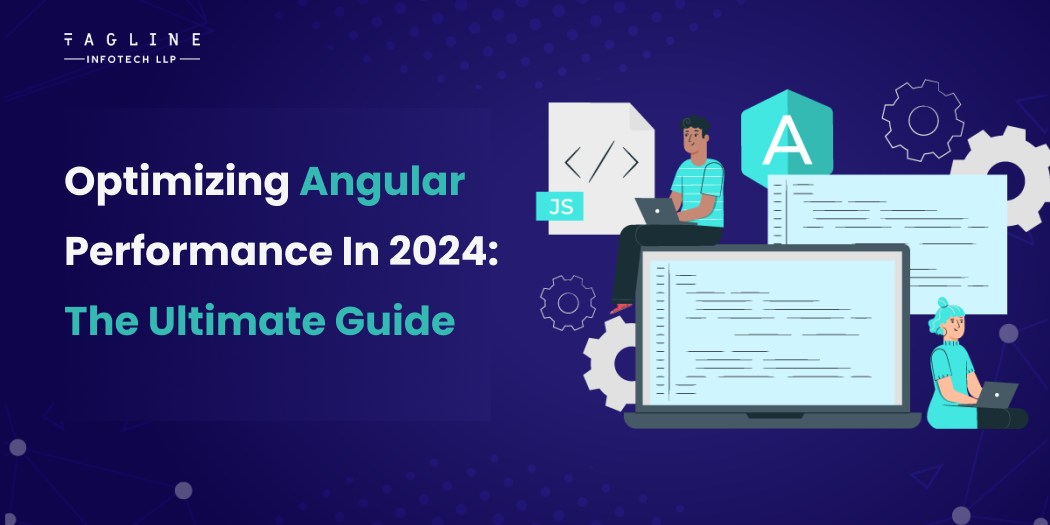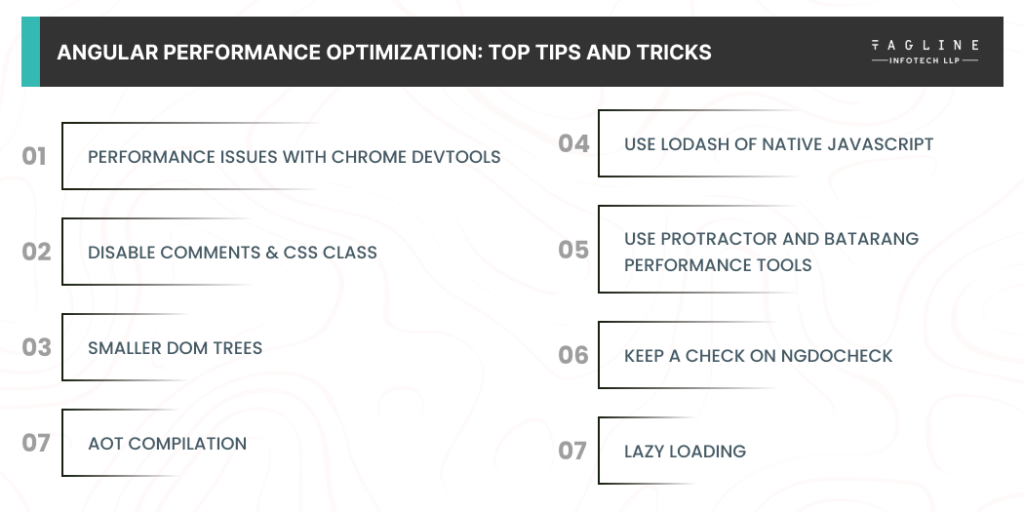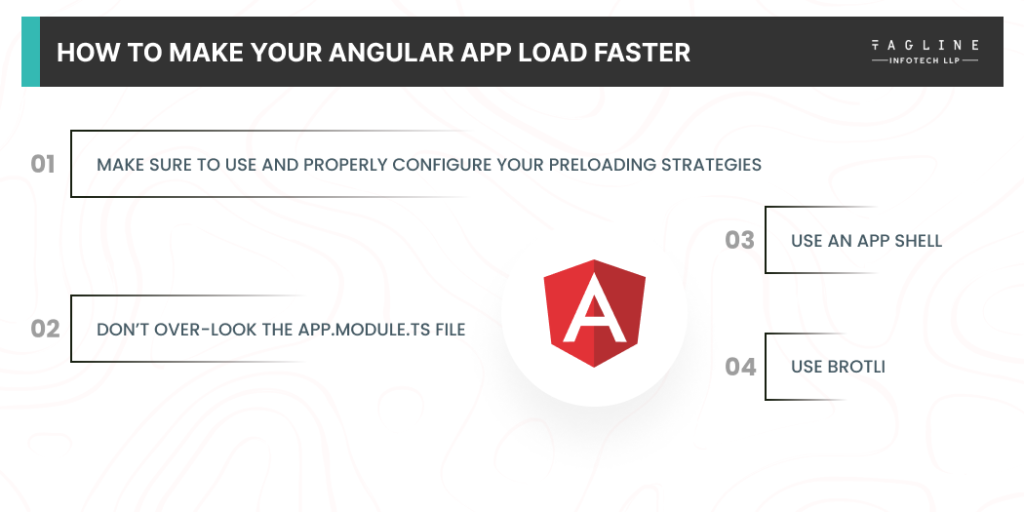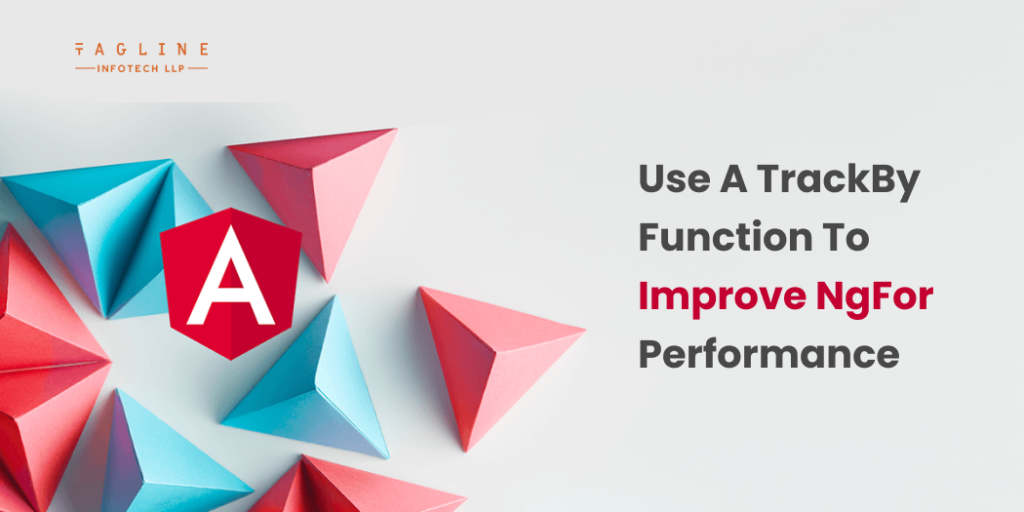How to Set up Google Firestore Database IOS?
May 21, 2024
Home >> AngularJS >> Optimizing Angular Performance in 2024: The Ultimate Guide

When talking about a framework, angular performance is always a talk. Yet, in order to keep your Angular performance optimization at its peak, you must adhere to a few recommended practices. We have covered some tried-and-true advice for enhancing the speed of your Angular application. By using these Angular tuning methods, you may remove the frequent bottlenecks and accelerate your Angular application. Trying to figure out how to increase performance of Angular applications then don’t worry this blog will be helpful.
Your users will certainly adore your software if it runs easily and without any problems. If you are wondering how to improve performance of Angular application then you are at the right place because here you can see some of the best techniques of Angular optimization. In order to determine how to improve the performance of your Angular project, let’s look at the Angular performance checklist.

This is a collection of tried-and-true techniques to speed up the performance of your Angular project. Go through this angular performance optimization checklist to make sure that Angular application is running perfectly. So don’t only have Angular 2 performance tips, but below find a whole list of the angular performance tips:
Learn more techniques of performance optimization in angular to improve app’s performance.
If there should be angular 2 performance tips, this one comes with the first performance angular tip. You must be aware of your app’s difficulties in order to optimize the performance of Angular in your application. You cannot resolve the problems if you are not aware of them. So, you must utilize Chrome DevTools like Timeline and CPU Profiler to identify the performance bottlenecks in your app. This browser-related tactic is advantageous.
Many apps have basic features and functions; therefore CSS styling and comment directives may not be necessary. You must disable your Comments Directive and CSS class if your app doesn’t require comments. These two features can slow down your app’s speed by taking a while to load. It is one of the most important factors in the process of AngularJs performance optimization.
Frequent access to the DOM may cause your program to slow down. As a result, you should try to avoid changing your DOM and keep it as simple as possible. Also, you need to make sure that your software scripts are properly packaged and minifying. Your app’s page load speeds will decrease if you do this. This method improves the functionality of your software. Work with the best Angular development company in India to create experiences that get results.
Your Angular app’s performance will be greatly improved by using the Lodash library. You can update Angular’s built-in methods and rebuild the program logic by utilizing these best practices for Angular. You may greatly increase your app’s speed in this way.
The Protractor testing tool, created by the Angular team, allows for flexible test execution. You may dramatically increase the performance of your app by utilizing Protractor. The team also created the Chrome addon Batarang, a debugging tool. You may monitor your performance benchmarks with Batarang. Further tools, such as NightwatchJS, WebDriverIO, TestingWhiz, etc., are available in addition to these two.
Every time you make a change, the directive ngDoCheck activates and recognizes the change. Your program will therefore slow down if you use this function for any computationally time-consuming task. To ensure that Angular performance optimization in 2024, you must keep a close eye on what and how you use this method.
Typescript is what Angular uses by default. You must convert the Typescript code into JavaScript in order to make it simpler for the browser to understand and run web applications. AOT (Ahead of time) and JIT are two different compilation modes that Angular offers (Just In Time).
When possible, Compilation is expected throughout the development phase. The Angular compiler is taken from the deployment package, and just the compiling templates are produced. The performance of apps is improved and the payload time is decreased thanks to this technique.
Every time an Angular application compiles, Webpack is used in the backend to build bundles, which eventually use memory and slow down the application. The Angular Lazy Loading approach, which divides the bundle into numerous modules and features to enhance the performance of the Angular application, might be used to address this issue.
Need assistance to fine-tune your existing Angular application?
Get in touch with us to work with the best Angular development company to lessen your struggle and achieve the app performance exceeding your user’s expectations.

Some developers are aware that their Angular app requires optimization, but they are unsure of how much or where to begin. Explore the given below so that you can improve angular performance and ensure that your app runs smoothly. As a result, they take wild stabs at the code or build configuration, then refresh the app to see if it appears to load faster than before. This type of optimization approach is nothing more than a circus act and deserves every bit of criticism it can get. So let’s get into the ways of making the Angular app load faster.
NgModules are eagerly loaded by default, which means that your Angular application loads every single NgModule that is loaded, even if they are not immediately required. So, in order to make your Angular application load faster, you must first divide the large beast into smaller pieces. The Angular documentation does an excellent job of explaining how to set up lazy-loading modules.
Once our application has been divided into lazy-loaded modules, we must optimize how those modules are loaded. The Angular framework provides two fundamental preloading strategies.
NoPreloading\sPreloadAllModules
If your users are employees with high-speed fiber-optic connections, use a preload-all strategy to load the entire Angular app immediately. However, if your Angular application has mobile users who use slow 3G connections, a more conservative approach is advised.
The App.module.ts file was bursting at the seams with imports and libraries that the project had outgrown. If your Angular app bundle is too large, the first place to look is in app.module.ts. It’s an excellent method for quickly optimizing your Angular application. And who knows, you might scare up some strange things.
An app shell allows you to quickly render a section of your Angular application. It was created to speed up your Angular application by sending a static rendered page (or a skeleton that is shared by all pages) to the client. The browser then loads the rest of your Angular application and switches to it when it is done.
An app shell is intended to display a meaningful first paint, allowing your application to appear quickly before the rest of the JavaScript files are loaded and parsed.
Brotli is the quickest way to speed up any Angular application’s load time. Brotli is a way to compress your build files and serve them to your users as smaller files if you’ve never heard of it. It was created by Google in 2013 and has gained a lot of popularity since then. Perhaps you’re familiar with the well-known Gzip standard. Brotli was introduced as a successor to Gzip and has recently gained popularity.
JavaScript files compressed with Brotli are approximately 15% smaller on average, HTML files are approximately 20% smaller, and CSS files are approximately 16% smaller. To be clear, Angular and Brotli have no special relationship. Brotli can be used to compress anything. It also works with other front-end libraries and frameworks such as React, Vue.js, and others.

The Angular framework is powered by a library called Zone.js, which detects changes whenever a DOM event occurs. Angular also has a useful feature known as ngFor. Because Zone.js generates a new render whenever a DOM event occurs, your list is being re-rendered whenever a button is clicked, for example… and you never see it because the list’s data hasn’t changed.
This may be acceptable if your list never grows. However, small lists tend to grow into large lists, and large lists will cause performance issues unless you’re an experienced Angular developer. We employ the trackBy function.
In a nutshell, the Angular trackBy function is an optional function that can be used with Angular’s ngFor. Angular trackBy is used to specify how to track changes for a list item. What is required to write our own trackBy function? And save money on costly re-rendering operations?
The first step is to include a trackBy function in our component’s Typescript file, as shown below. Then, we’ll update our ngFor to make use of the new trackBy function. That’s how you use the trackBy function to make your lists run faster.
Want to ensure your Angular app is performing at its best in 2024? Get our expert advice!
Our team has put together the ultimate guide to optimizing performance in 2024. Get our Expert Advice ensure your Angular app is performing at its best.

As previously stated, Angular employs Zone.js to detect events such as mouse clicks, keyboard presses, and so on. When Zone.js detects an event, it examines the data bindings and updates any stale data bindings, ensuring that the data displayed to the user is always fresh, new, and correct. That is the essence of change detection. It’s a cool feature, but it has limitations, and if you abuse Angular change detection, it’ll get cranky. So, how do we track down performance issues with change detection?
Open the main.ts file (which is used to bootstrap your Angular application) and change the following lines of code
After changing, it will appear like this:
platformBrowserDynamic().bootstrapModule(AppModule)
.then(module => enableDebugTools(module.injector.get(ApplicationRef).components[0]))
.catch(err => console.error(err));Profiling Change Detection Time
Now that we’ve enabled the debug tools, we can use them to see how long it takes to detect changes.
ng serve —open will be used to run our Angular application.
Open the console in Developer Tools as soon as it launches in your browser and type the following command to see how long the last change detection cycle lasted.
ng.profiler.timeChangeDetection()A change detection cycle of 0.01 – 0.05 milliseconds is typical for a simple Angular application. And, while opinions differ, it is generally recommended that your change detection cycle never exceed 10ms.
Performance angular is the real matter for this blog. Assume you have an Angular component that shows a list of 5,000 random numbers. How do you expect it to perform? When the change detection cycle was tested, it took at least 12 – 14ms.
import { Component, OnInit } from '@angular/core';
@Component({
selector: 'app-number-list',
template: `
<ul>
<li *ngFor="let number of numbers">{{ number }}</li>
</ul>
`,
styleUrls: ['./number-list.component.css']
})
export class NumberListComponent implements OnInit {
numbers: number[] = [];
constructor() { }
ngOnInit(): void {
this.generateNumbers();
}
generateNumbers(): void {
for (let i = 0; i < 5000; i++) {
let number = Math.random();
this.numbers.push(number);
}
}
}This is a simple example of a subpar component. Lists are a common cause of long change detection cycles, and a virtual scrolling strategy is a good way to fix a long list. The Angular Material CDK includes a fantastic virtual scrolling package that is well worth investigating.
Perhaps your Angular application is being slowed down by a slow API server. And how would you know if it is? To monitor any slow HTTP calls, you can use an HTTP interceptor. After you’ve built your HTTP interceptor, use it to track how long it takes outbound HTTP requests to complete.
That is an explanation of the numerous ways in which you can double, triple, or quadruple the performance of your Angular application. One of the reasons I like Angular is that it is a rapidly evolving framework.
It was created by a fantastic group of people who want to understand the frustrations that Angular developers face. The Angular team has already worked hard to improve the performance of Angular applications, and we can expect them to do so in the future. Sure, Angular has some performance issues, but I still prefer it to some of the other libraries and frameworks available.
Also Read : Tips to Hire Angular Front End Developer in 2024
Not all of these Angular performance optimization tips can be implemented in your app at the same time to improve performance. You must implement those tips that benefit your app and business based on the requirements of your app. I am confident that after reading the above Angular performance optimization guide 2024, you will understand that Angular app performance optimization is not easy; it necessitates the assistance of skilled and experienced professionals who can assist you in optimizing your application in the best way possible.
If you’re already convinced and looking for a helping hand to improve the performance of your Angular app or looking for websites built with angular, contact Tagline an Angularjs development company to hire AngularJS developers with the desired skillset.
An app shell allows you to quickly render a section of your Angular application. It was created to speed up your Angular application by sending a static rendered page (or a skeleton that is shared by all pages) to the client. The browser then loads the rest of your Angular application and switches to it when it is done.
There are two potential performance bottlenecks in your Angular application:

Digital Valley, 423, Apple Square, beside Lajamni Chowk, Mota Varachha, Surat, Gujarat 394101
+91 9913 808 2851133 Sampley Ln Leander, Texas, 78641
52 Godalming Avenue, wallington, London - SM6 8NW